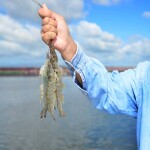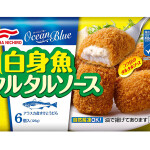People talk a lot these days about buying local — local tomatoes and corn, shopping at farmers’ markets, and signing up with farmers for a share of their harvest or fishermen for a share of their catch.
In New England, that interest has definitely spread to seafood, with interest in Community Supported Fisheries (CSF) programs. Modeled after community supported agriculture (CSA) setups, consumers commit to buying a share of the catch and pay up front for it. Hannaford Bros. in northern New England is sourcing half its seafood from the Gulf of Maine, part of its developing sustainable seafood policy.
(For more on buying local seafood, check out the “Going Green” feature in the March issue of SeaFood Business magazine.)
All of this activity around “local” begs the question, “Should sourcing more local seafood be part of your sustainable seafood policy?”
Sounds like a great idea to me — with a few caveats.
Here’s what Jeanne von Zastrow, senior director of sustainability and industry relations at the Food Marketing Institute, has to say on the question: “Each retailer must decide for themselves what their purchasing policies are based on what is available, price and consumer demand,” said von Zastrow. “In many cases there are local products available, and when those products meet the retailer’s food safety, sustainability and other standards, they can fill an important niche for consumers who prefer local product as well as help to reduce costs and emissions of transportation that would be involved in sourcing the same product from a more distant place.”
First, how do you define local? That depends on your location, as there is no legally mandated language defining “local.” If you’re in a coastal market, it would seem local means sourced from the region’s waters. But if you’re in a landlocked part of the United States, can you make the case that Alaska seafood is local? Maybe. Definitely U.S.-produced. It’d be interesting to see which marketing descriptor — Alaska, U.S.-produced or local — best resonates with consumers in the vast inland parts of the United States. My money’s on “Alaska.”
Next, the argument in favor of local: Buying local fish can be a great way to satisfy the “triple bottom line”— the responsibility of business not only to make money, but also be socially and environmentally responsible, also known as “people, profit, planet.”
U.S. fisheries are well-regulated. The United States scores 87.6 out of 100 for its fisheries according to the 2010 Environmental Performance Index produced by environmental experts at Yale and Columbia Universities.
The National Marine Fisheries Service has a mandate to end overfishing in U.S. waters by 2010. Plus, it’s pretty easy to determine the status of a U.S. fishery, and knowing the status of a stock is a key first step in environmentally responsible seafood sourcing. Sourcing close to home also promises a smaller carbon footprint, or fewer carbon emissions involved in a shorter transportation distance. That’s the planet part.
The people part is pretty simple: retailers and restaurants that source local fish are supporting their local fishing communities, many of which have taken a beating in the last decade or so. “Increasingly people like to support their local business (fishermen) and people are becoming more and more aware of ‘food miles,’ said von Zastrow. “So local, when available, can be an important offering.”
As for profits, only you can be the best judge of what will make money for your business. But it would seem buying local fish would theoretically drive some transportation cost out of the equation, and that traveling a shorter distance yields a fresher, better quality product.
Marketing locally sourced fish holds a lot of customer appeal. Consumer interest in CSFs so far is exceeding expectations of their organizers. A new CSF project at Duke University maxed out at 400 subscribers; 400 more people are on a waiting list. These folks are the typical demographic for seafood: higher-than-average education and higher-than-average income.
Attaching provenance to a product has been important for years: Maine lobster, Alaska salmon, Gulf of Mexico shrimp. Between food recalls and eco-awareness, people simply want to know where their food is from.
And local is also a great way to talk to customers about sustainability, a fuzzy word that doesn’t resonate nearly as much as “local” or “community,” said Laurie Demeritt, president and COO of the Hartman Group in Bellevue, Wash., which has conducted many studies of consumer behavior around sustainability.
Now, for the caveats. The local fishery should absolutely not be in decline. Local and sustainable aren’t the same if the fish is from an overfished fishery, or one in which overfishing is happening, or bycatch is an issue. That’s not in line with the sustainability ethic.
Local sourcing, also, should not become, well, a “red herring.” In other words, big-volume operations have much to look at before tackling sourcing more local fish. The effort from FMI’s Sustainable Seafood Working Group to look at the environmental issues and solutions associated with the five top-selling seafood species — shrimp, canned tuna, salmon, pollock and tilapia — is well-placed. A buy-local effort should not derail that.
Ultimately, it’s up to individual businesses to prioritize projects to most effectively achieve the triple bottom line. The U.S. seafood market will undoubtedly continue to need imports to offer variety to customers — imports make up 83 percent of the U.S. seafood supply. There simply isn’t enough “local” fish to go around.
All that said, sourcing more local fish might just deserve a place in your sustainable seafood purchasing policy.





